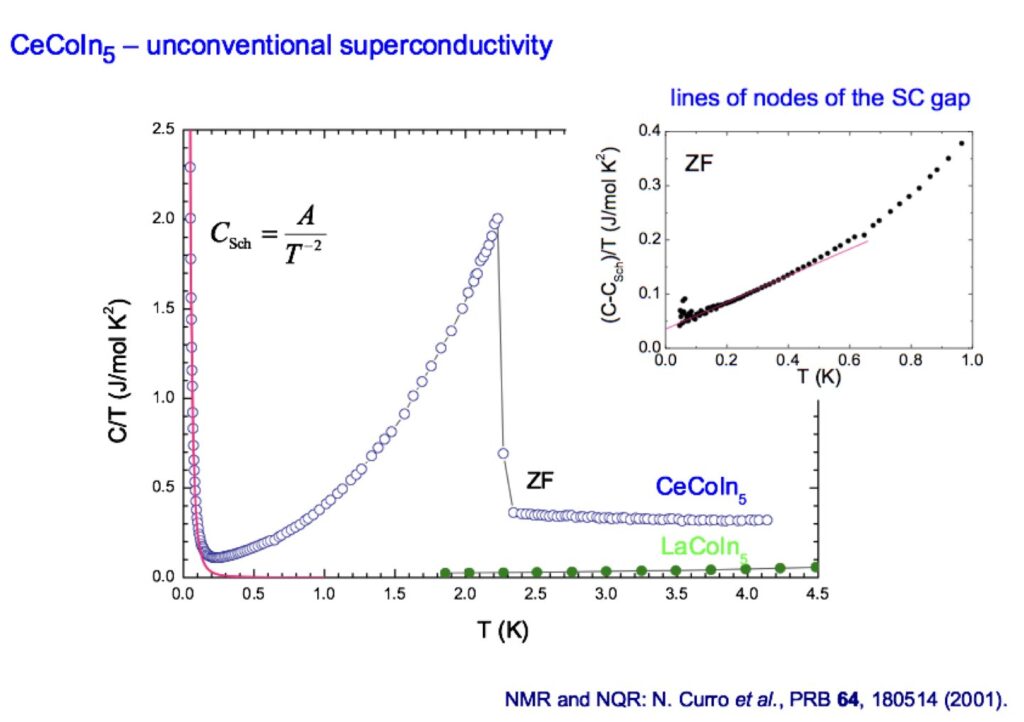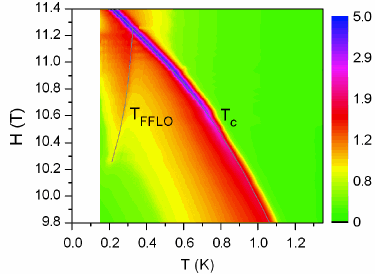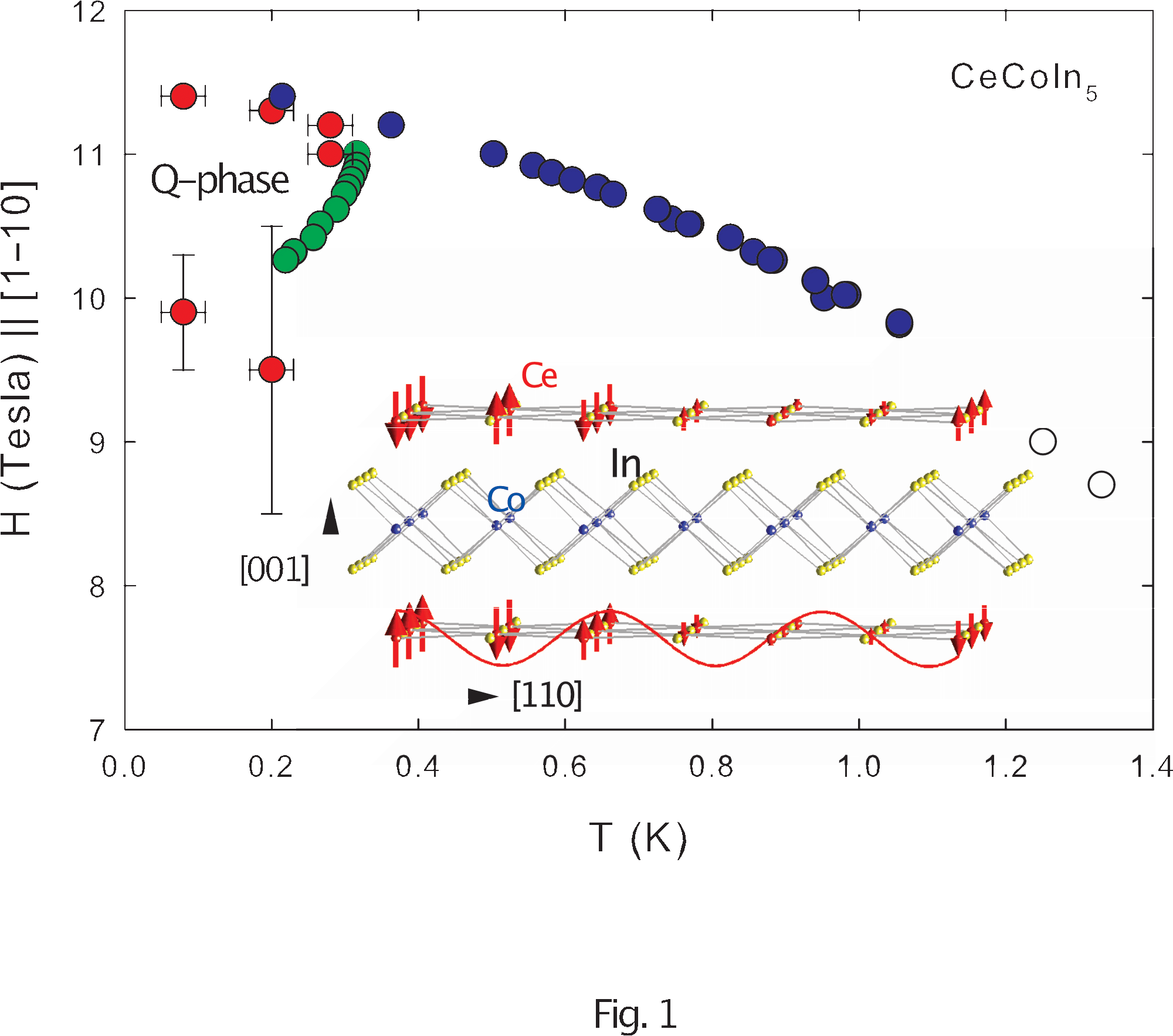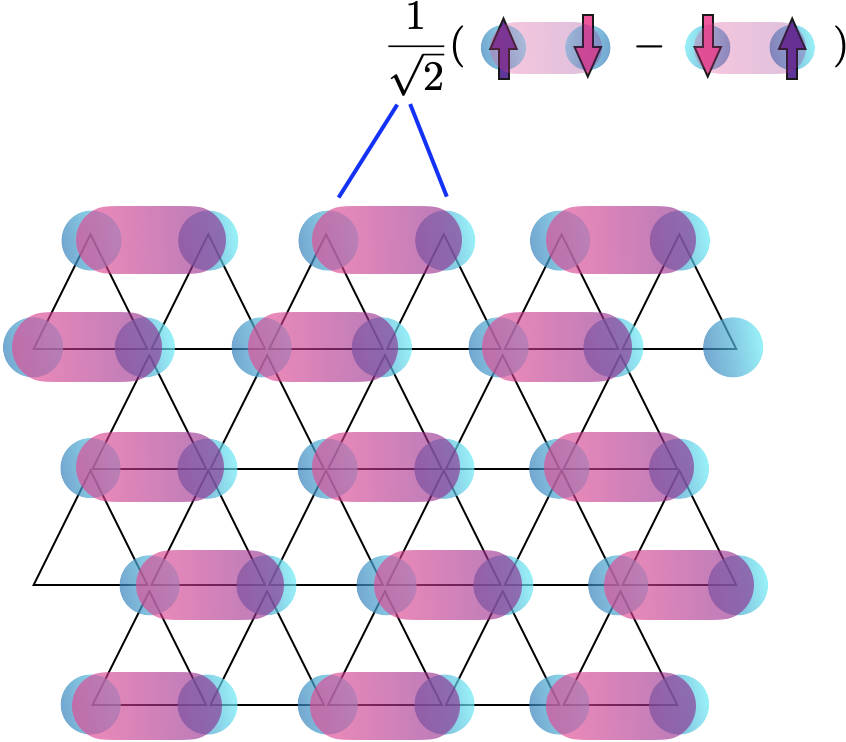Conventional superconductivity

As Bardeen-Cooper-Schrieffer (BCS) were able to show, is that the electron-phonon interaction mediates superconductivity. In a cartoon picture, a passing light and fast (Fermi velocity vF) electron with its negative charge distorts the lattice of the heavy masses of the positive ions of the lattice. This allows a second electron to feel this distortion, as the lattice distortion disappears only at the speed of sound (vs) and vF>>vs. This leads to an attractive interaction between the electrons which then will from Cooper pairs and undergo a phase transition to superconductivity.
Heavy Fermion superconductors

Let’s use them as an example, and here we look at CeCoIn5. Ce3+ ion in this compounds is magnetic. Thus if one measures the magnetic susceptibility at high temperatures, one observes this moment and from fitting a Curie-Weiss law, one gets a negative intercept which for a normal magnetic material one would interpret as antiferromagnetic interactions, which give rise to magnetic order. However, unexpectedly, one finds a superconducting phase transition. Now there exists a non-magnetic analogue, LaCoIn5, which has the very same crystal structure and thus most probably the same electron-phonon interactions. Curiously, LaCoIn5 is a normal metal and does not become superconducting. So the magnetic moment on the Ce is an important ingredient for superconductivity. Also, no the huge difference in Sommerfeld coefficient Cm/T between CeCoIn5 and LaCoIn5, which indicates strong electronic correlations, or so-called “heavy” electron masses.
Q-phase

Superconductivity can be destroyed by applying a magnetic field. Normally, for a type-II superconductor such as CeCoIn5 one should observe only two phases: the Meissner phase, where supercurrents completely shield the interior of the superconductor from the magnetic field, at very low fields (very hard to observe in CeCoIn5) and the Abrikosov phase where the magnetic field pierces the superconductors in units of the flux quantum, not unlike when one sticks spaghetti into a slice of hot dog. However, for very high fields and very low temperature, there is an additional phase, the so-called “Q-phase” (the TFFLO line in the graphic), in CeCoIn5.
Inside the Q-phase

A careful neutron scattering study on CeCoIn5 single crystals showed, that antiferromagnetic order is present inside the Q-phase. What makes this so unusual is, that the AFM exists just inside the superconducting part of the phase diagram, but is absent in the normal state.

 fr_FR
fr_FR